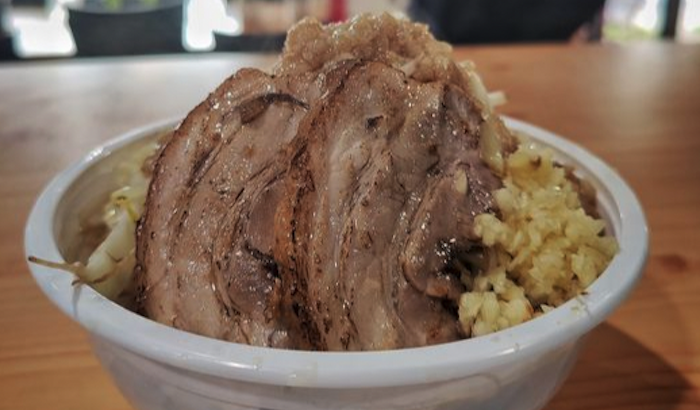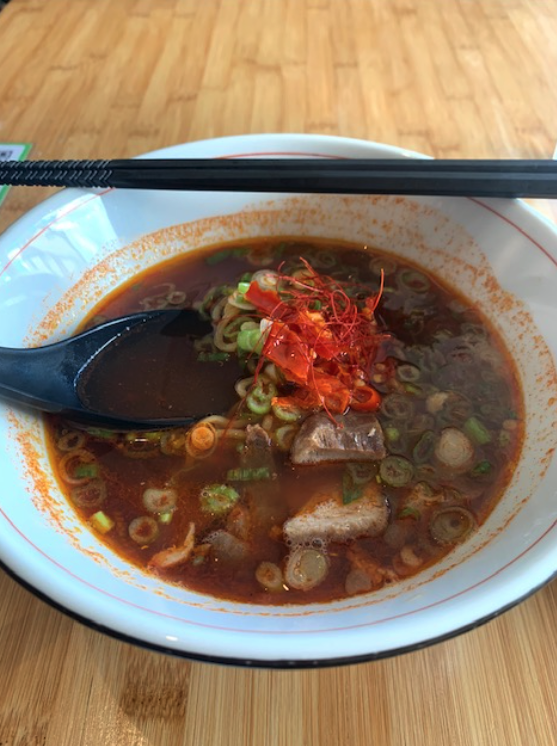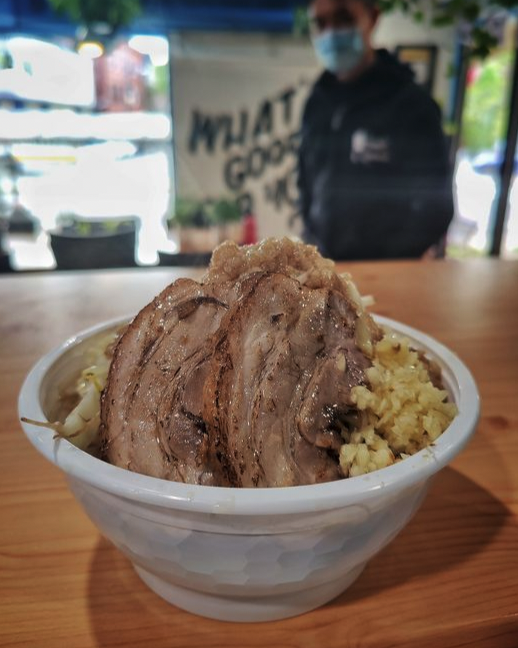
Two spots that will expand your soup horizons forever
First, let it be known that, no, I haven’t been to every single one of the over 50 ramen shops in and around Boston. But, I have been stalking so-called “best of” lists like an internet sleuth, cross-referencing the top choices across listicles. The thing is, once you’ve had a seriously magical bowl of ramen, it’s hard to nod and quietly slurp just good noodles and broth.
And these two spots, they’re it. You’ll find good ramen all across Boston. But where’s the fun in that?
Pikaichi Ramen: 123 Boston Ave, West Medford, pikaichiramen.com (ON SUMMER BREAK UNTIL SEPT. 5)
Originally an Allston favorite inside of Super 88, Pikaichi remains a gamechanger in the Greater Boston ramen scene in its present Medford location. Always greeting customers with a smile (you can even tell behind a mask) and a resounding “irasshaimase!” (“welcome!”) from the staff, Pikaichi feels like home after one visit.
But even if the place was run on a mountaintop, I would keep coming back. Simply put, the ramen is perfect. That’s what you’ll find with any of Pikaichi’s takes on classic miso (a fermented Japanese seasoning, typically made with soybeans), shoyu (soy sauce), and shio (salt) ramen varieties—perfection.
“All of Pikaichi’s tare (soup bases) are made from scratch,” Ritsuko Akatsu told me, wife of head chef and owner Taka Akatsu. “Tare is one of the most important elements in a good bowl of Ramen.”
Head chef Taka is originally from Hokkaido, Japan, but began making ramen in the states 11 years ago when he first opened Pikaichi. Over those years, Taka mastered the standard ramen varieties, but possibly most notable is his miso vegetarian bowl made from kombu (kelp) broth.
Traditionally, ramen broth is almost exclusively made of animal or fish bone, and supplemented with fresh vegetables, sauces, and pastes (like miso). While many places in Boston do offer vegetarian options, it’s difficult to get the same oomph from most vegetable bases. But at Pikaichi, the house-made kombu broth rivals even the most hearty pork-based tonkotsu broths in richness and flavor.
If I was rich, I would personally keep Pikaichi in business, just so I could eat this stuff for the rest of my days. But guess what—I don’t have to be. At only $10.50 for their signature bowl of spicy miso, it’s the greatest deal in Greater Boston.

Yume Ko Katare: 1923 Mass Ave, Porter Square Cambridge, facebook.com/YumeWoKatare
Dreams really do come true, at least for the 30 precious minutes spent inside these close four walls. Not a ramen shop, but a dream shop; Yume Ko Katare has something to offer that extends far beyond just noodles. Maybe it’s that you sit so close to your neighbor that your elbows touch, or how the chef looks you in the eye and asks what your dreams are. Whatever it may be, it’s the place where you can sit, dream, and eat an amazing bowl of ramen.
The first bite of this stuff—this monstrous concoction of noodles, bean sprouts, delicious garlic (as the chef calls it), tender pork belly, and fatty pork broth—it’ll change your life. I’m not kidding, that first taste of pork belly atop my mountain of noodles unlocked something chemical in me. I knew I would never be able to silently accept mediocre ramen in a dull atmosphere as good, solely because this existed.
Three long tables seat six people each, all facing the head chef, Jake Vo, who prepares each bowl of Jiro-style ramen—a variety that isn’t very common across Greater Boston’s extensive ramen scene. And maybe that’s for a reason. Only the strong survive.
As Jake told all 18 of us eating, the idea is that “if you can conquer this bowl of ramen, you can conquer anything.”
Everyone, before they leave, gets to say their dream at that moment to applause and cheers. Then their “work” is rated. That, meaning, how much ramen they were able to put away. About half a bowl gets a “good job!” from the staff and customers, and anything less gets an “almost!”
Of course, nothing quite boosts the ego (I mean lifts the spirits) more than a “perfect.” That kind of praise is only reserved for the true heavyweights, those able to finish an entire bowl. Let’s just say my spirits were fucking lifted.

—
When it comes to affordability, energy of the staff, and overall aroma and taste, it’s hard to compete with these two spots.
Like boba tea before it, ramen has become trendy in Boston—which means there are a whole lot of meh options at jacked-up prices. When ramen was first invented in China, and then later adapted in Japan, it was the food of poor workers because it was so cheap to make and had good nutritional value. Remember that next time you’re eating a $20 bowl of salt and sponge.
Rónán is a photojournalism student at UMass Amherst. Originally from Somerville, his work focuses on housing and development issues.

